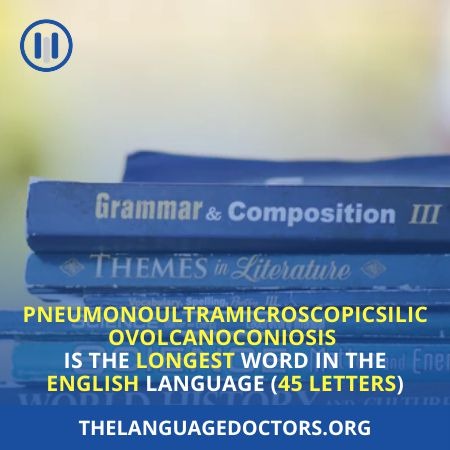Scent of a Woman,” produced in the United States in 1992, is a film based on the novel “Darkness and Honey” by Italian author Giovanni Arpino. It is a remake of an Italian film with the same name made in 1974. In this movie, Al Pacino stars as a blind retired lieutenant colonel who lost his sight in an accident.
On the eve of Thanksgiving, Charlie Simms (Chris O’Donnell), a student at the prestigious Baird School in New England, agrees to take care of Frank Slade (Al Pacino), who is left alone. However, before the Thanksgiving holiday begins, Charlie witnesses his friends overturning the paint on the school principal’s car. The school principal, Mr. Trask (James Rebhorn), offers to get him into Harvard University if he reveals the culprits, but Charlie refuses and leaves for New York with Slade.
Upon their return to New England, a disciplinary committee convenes over the insult incident involving the principal, and Al Pacino delivers a powerful speech, including the line “I’ll take a flamethrower to this place,” at this meeting. This scene is often credited as the key to winning Al Pacino the Academy Award for Best Actor in 1992. Although Pacino won the award at the 65th Academy Awards for this role, it was after he had been nominated seven times without a win.
“Mr. Trask: Sir, you’re out of order.
Lt. Col. Frank Slade: Out of order. I’ll show YOU “out of order”! You don’t know what “out of order” is, Mr. Trask. I’d show you, but I’m too old, I’m too tired, I’m too fucking blind. If I were the man I was five years ago, I’d take a…
Lt. Col. Frank Slade: FLAMETHROWER to this place! Out of order? Who the hell do ya think you’re talking to? I’ve been around, ya know? There was a time I could see. And I have seen. Boys like these, younger than these. Their arms torn out, their legs ripped off. But there is nothing like the sight of an amputated spirit. There’s no prostetic for that. You think you’re merely sending this splendid foot solder back home to Oregon with tail between his legs, but I say you are executing his SOUL! And why? Because he’s not a Baird man. Baird men. You hurt this boy, you’re gonna be Baird bums, the lot of ya. And Harry, Jimmy, Trent, wherever you are, fuck you too!
Mr. Trask: Stand down, Mr. Slade!
Lt. Col. Frank Slade: I’m not finished! As I came in here, I heard those words, “Cradle of Leadership”. Well, when the bough breaks, the cradle will fall. And it has fallen here. It has fallen. Makers of men, Creators of leaders. Be careful what kind of leaders you’re producing here. I don’t know if Charlie’s silence here today is right or wrong. I’m not a judge or jury, but I can tell you this: He won’t sell anybody out to buy his future! And that, my friends, is called integrity. That’s called courage. Now that’s the stuff leaders should be made of. Now I have come to the crossroads in my life. I always knew what the right path was. Without exception, I knew. But I never took it. You know why? It was too damn hard. Now here’s Charlie. He’s come to the crossroads. He has chosen a path. It’s the right path. It’s a path made of principle that leads to character. Let him continue on his journey. You hold this boy’s future in your hands, committee. It’s a valuable future. Believe me. Don’t destroy it. Protect it. Embrace it. It’s gonna make you proud one day, I promise you”
It is said that there are approximately 6,800 languages spoken in our global village. While some worry that half of these languages are disappearing, those who need to learn them may wonder just how many words they need to memorize, considering that each language has different names for the same object.
Counting the number of words recorded in dictionaries is possible, but estimating the total number of words in a language is challenging due to varying definitions of what constitutes a word. Based on dictionary entries alone, one could argue that Korean has the most words, with over 1 million words listed in the Urimalsaem(Korean Language Dictionary). However, an objective examination of the Oxford Dictionary reveals that both Korean and English have approximately 600,000 words recorded, which is already a substantial number.


However, there is no need to worry too much. This is because most words are combinations of a smaller set of basic characters. For instance, the 3,500 commonly used Chinese characters are based on about 214 radicals. It is said that the ancestors of the English language had about 900 basic characters. The current vocabulary has evolved through combinations of these characters and the incorporation of loanwords. Among the words listed in English dictionaries, about 25% are of original English origin, with the rest coming from languages like Latin and French.
Knowing just a few of these words can enable basic communication with foreigners. This is true for English as well. For example, “Yo, Adrian!” from Rocky has become one of the most memorable movie lines in the history of American cinema, ranking 80th. Other phrases, such as “Hello, gorgeous.” from Funny Girl (1968) and “My precious” from The Lord of the Rings: The Two Towers (2002), spoken in a covetous and greedy voice by Gollum, have become iconic with just two words.
In Scent of a Woman, the dictionary meaning of “out of order” is “broken,” but in the movie, it is used to mean “excessive.” This demonstrates how the arrangement of just three letters can effectively convey the speaker’s intended meaning. Initially, most languages probably had this form. As knowledge accumulated and societies developed, languages evolved to explain more complex facts and convey subtle emotions, creating patterns and laws.
The same applies to English. The bad news is that the word order differs across languages, which is a major challenge for those learning English. The good news is that there are rules to the order in which English is spoken, and some people have organized these rules into a few formats, including the five basic sentence structures taught in school.
As emphasized earlier, a common point in all discussions about word order is that in English, the subject is always followed by the verb. This approach is described as starting with the subject and verb as a conclusion. The first step to becoming familiar with English is to understand the <subject + verb> structure in one go. Once you have grasped the subject and verb in English, you can then infer who? what? when? how? etc., answering these questions in sequence.
Single English Pattern Based on the 5W1H Principle.
By observing the patterns of English usage, it’s possible to discover that English speakers fortunately express themselves using a method that answers the questions known as the 5W1H or the six journalists’ questions. This principle, which is none other than the method of writing news articles, teaches to describe by answering the questions “Who did what, when, where, why, and how?”
Interestingly, there is a priority to the questions represented by the 5W1H principle, and the priorities differ between Korean and English speakers. For example, while Korean tends to mention time first, English speakers often address questions about location first.
Reframing the way English sentences are constructed, based on the 5W1H method, reveals a structured approach to sentence formulation:
Subject (S) + Verb (V) followed by answering the questions: Who? What? Where? Why? How? When?
Subject (S) + Verb (V) + (Who?) + (What?) +
(Where?) + (Why?) + (How?) + (When?)
This method encapsulates the essence of the 5W1H principle, highlighting a preferred sequence in standard English communication. While numerous exceptions may arise, this sequence offers a foundational guideline. Understanding this framework aids in identifying deviations from the norm. Essentially, English communication often begins with a conclusion, then sequentially addresses subsequent inquiries to elucidate or expand upon that conclusion. To facilitate easier reference and application, consider breaking down this sequence into identifiable components, akin to mathematical factorization.
S + V + (Who + What) +(Where + Why + How + When)


답글 남기기